Not all that long ago, foreign manufacturers like General Motors, Ford and Volkswagen dominated the Chinese automotive market where, in some cases, they were making their biggest profits. Now, as domestic competitors like Geely and BYD gain traction, times have changed. On Wednesday, General Motors revealed plans to take more than $5 billion in charges to restructure its Chinese operations and is likely to close some of its plants there. But it’s far from the only international manufacturer struggling in the world’s largest automotive market.

GM’s Chevy brand has barely been selling enough vehicles in China to support its local dealer network.
General Motors was the first foreign automaker to get serious about building vehicles in China. And while there were plenty of skeptics when its Buick assembly plant opened in Shanghai back in 1998, GM soon silenced the naysayers. A decade ago it was selling more vehicles in that vast Asian market than in the U.S. and made more profits there, as well.
How times have changed. On Wednesday, in a regulatory filing with the U.S. Securities and Exchange Commission, GM announced it would take a $2.7 billion hit to earnings for the cost of restructuring its Chinese operations. On top of that, the Detroit automaker said, it would write down somewhere between $2.6 billion and $2.9 billion due to the declining equity value of its joint venture with domestic Chinese automaker SAIC Motor Corp.
Among other things, GM expects to see some of its plants close there while it will drop some previously popular model. And, in keeping with the broader transformation of the Chinese market, it will shift more of its focus to New Generation Vehicles, an umbrella term used by the Beijing government covering both plug-in hybrids and battery-electric vehicles.
But GM is far from the only foreign manufacturer struggling to regain its footing in China.
GM struggles to regain its footing
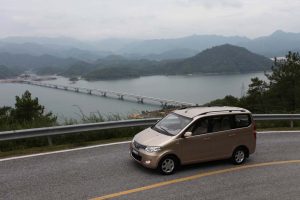
GM’s SAIC-GM-Wuling (SGMW) joint venture has begun sales of the Wuling Hong Guang, China’s first compact business vehicle. Nine Hong Guang models are available, priced from RMB 44,800 ($6,600) to RMB 60,800 ($9,000). X11WU_HG003CN (09/14/2010) (China)
Things haven’t looked particularly good for GM since around the time COVID hit, though it was hard to tell what was the result of the pandemic and what was being caused by deeper, more lasting changes to the Chinese market.
Until this year, anyway, as the bottom fell out for the Detroit automaker, It has now run up losses for three consecutive quarters, the deficit reaching $137 million between July through September, compared to a $192 million profit a year earlier.
Meanwhile sales tumbled 18% — to 1.2 million — compared to prior-year numbers. Whatever it delivers during the final three months of this year it’s expected to come in well short of the record 4 million vehicles GM sold in China in 2017.
The downturn has been particularly hard on the familiar Chevrolet brand which last year delivered just 169,000 vehicles in the market. It’s dedicated Chinese brand, Baojun managed to sell just 106,000 vehicles.
Downsizing
Under CEO Mary Barra, GM has shown little willingness to prop up endlessly money-losing operations. She has ordered the closure of red-stained operations in Russia, India and Australia and sold off the long-suffering Opel and Vauxhall brands in Europe. While there is yet no indication GM might want to exit China entirely, the automaker is quickly moving to downsize operations there.
“The business has to stand on its own, and it can’t take a significant amount of investment,” CFO Paul Jacobson, said on Wednesday during the UBS Global Industrials and Transportation Conference. “We’ll restructure some of our agreements and make sure that we can manage with the cash flows as we right-size that business to a much smaller demand set.”
By dropping weak models and closing underutilized plants – which ones it has yet to disclose — GM hopes to bring production in line with demand. But whether it can pull that off is a big question. It also will need to bring to market more NEV models, particularly in entry-level segments, as its Chinese domestic competitors are doing.
More GM News
- GM Posts Massive Loss in China
- GM Moving HQ – But Not Very Far
- GM Takes Another Step Towards Going Back to the Moon
China’s domestic brands proving unstoppable
Where GM once had to worry about what Volkswagen was doing in China it now has to look at local brands. BYD became the number one brand in China, based on vehicle sales in 2022. It sold sold 506,804 NEV models last month, topping the previous record of 502,657 set in October.
BYD set a global record on November 18, announcing that it become the “world’s first automaker to achieve the rollout of the ten millionth new energy vehicle.” now outperforms Tesla in terms of worldwide EV sales. For the first 11 months of this year, BYD delivered 3.74 million vehicles, surpassing its original full-year goal of 3.6 million.
But it’s not the only Chinese domestic brand slashing into the sales and market share of foreign competitors. Geely, Great Wall and other local manufacturers are rapidly gaining ground – in part through a willingness to engage in the aggressive discounting that has proved so damaging to their financial picture.
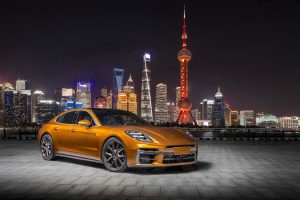
A 2024 Porsche Panamera in Shanghai. Parent Volkswagen has lost its position as China’s best-selling automaker.
Foreign manufacturers back off
GM is by no means the only foreign automaker to back down in the face of relentless domestic competition.
Volkswagen has pared back operations, recently selling off a joint-venture plant in the western province of Xinjiang – though that move was partially due to concerns over alleged human rights violations. It also has downsized its product roll-out targets. Where it said it early this year that it wanted to have 30 EVs available in China by 2030 it now has cut that to 18.
Meanwhile, Acura, Mitsubishi and Jeep have completely pulled out of China, while there’s growing pressure on Ford to do the same thing. Ford last month said it would cut 4,000 jobs and, while those are mostly in Europe, it blamed weak EV demand and competition from Chinese rival for weakening its financial position.
“What’s happening in China now is not a temporary problem,” David Whiston, U.S. autos equity analyst at Morningstar Research Services, told noted Automotive News. “The days of China consistently earning GM $2 billion a year “are over, and they’re probably over for good.”

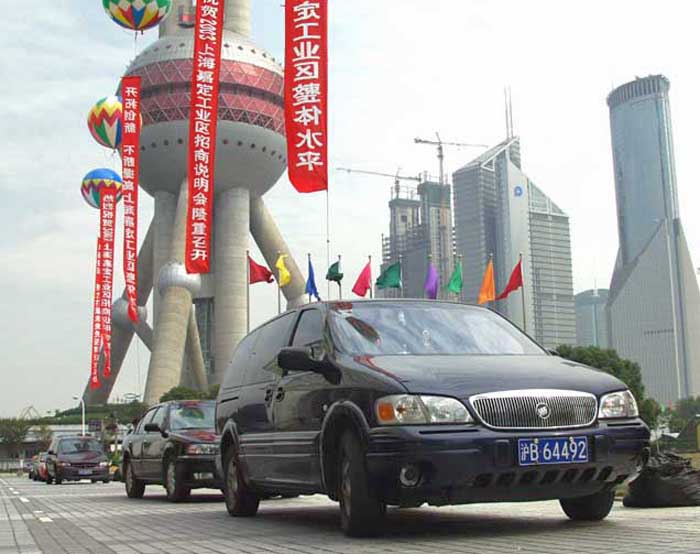
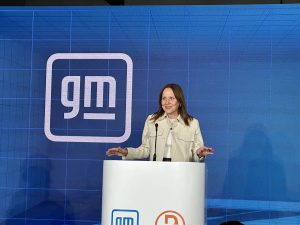
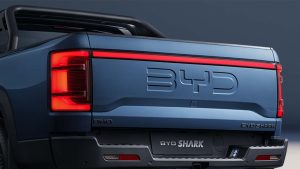
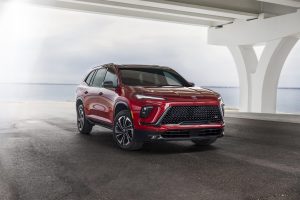
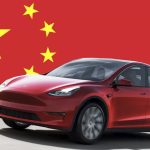



The lead picture (Buick??) says it all. Who would buy that ugly POS. It looks like a holdover from 1985.
That is not their latest model. It’s from when Buick dominated the Chinese market.